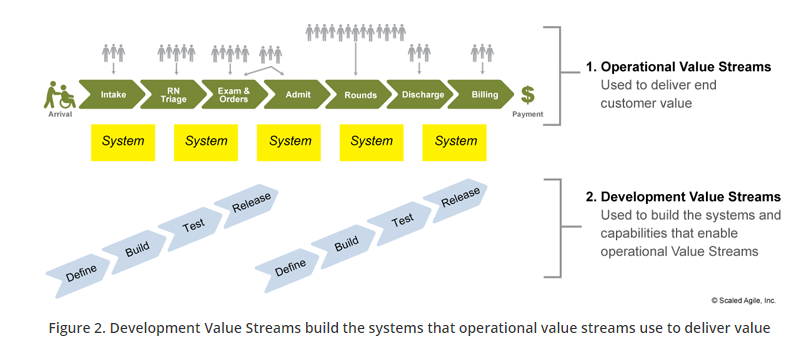Successful project management require you to manage numerous moving parts. Add to the mix strict deadlines and you’ll have little room to make mistakes. With a detailed project plan and smart project management tools however, you can achieve your project goals and fulfil the required quality standards.
1. Communicate goals and individual responsibilities
When working to urgent deadlines, ensure quality by making sure everyone in the team understands their responsibility as well as the overarching goal. Communication is crucial because it helps you coordinate and steer your team towards defined goals.
Using feedback loops is an essential element of effective team communication. With feedback, you can check that team members understand what they’re doing and what’s expected of them. Encourage team members to ask questions and let them know any question, no matter how obvious the answer might be, is a welcome question.
2. Manage risk
Proactively manage risk by identifying potential risks, determine probability, and determine possible impact. Use a risk register to log and track risks, and identify possible countermeasures so you can act quickly and mobilise your team in a new direction if required.
A proactive risk management strategy allows you to minimise potential problems that can interrupt your ability to deliver the project on time. It could even help you avert disaster and non-delivery. Sources of risk include any events that affect your resources, team and individuals, processes, and technology.
3. Learn how to prioritise tasks
Shifting and competing priorities come with any project. Without effective prioritisation, you can end up falling behind, failing to achieve targets within budget, and creating a defeatist team morale.
One easy way to prioritise team tasks is to display a detailed project schedule, whether on a physical board or a virtual one (or both). When changes to task assignments are updated, communicate it to team members. Use a workflow management or project management tool to manage multiple tasks and project elements.
Distinguish between urgent and important tasks. Track project backlogs with your workflow management tool so you can assign them to individual team members in order of priority. Always include a completion date for every task.
4. Stick to your detailed project plan
Work to your detailed project plan so you fulfil all necessary project management elements. Your project plan should have specific details relating to identifying and meeting with appropriate stakeholders. For example, you’ll need to meet with project sponsors and major stakeholders to define things like budget, timeline, and scope.
Your project plan should outline the goals of your project, list goals in order of priority, and define the deliverables you need to have at completion. The plan should reflect your business case and quality requirements. Milestones and deadlines need to be clearly stated. Finally, your project should outline risks and your risk management plan.
5. Document all details of the project
Track multiple moving parts by accurately documenting all project details, so you can check up on things or refer back to your stated goals quickly. You can use your project management software to do this, or you can create your own templates and documents to record what’s happening.
Vital elements you’ll want to track include the business case of your project, a statement of work, the project charter, and your project management plan. Other elements include an action log, a risk register, status reports, and budget. Essentially these are control mechanisms that let every project manager needs to monitor and correct the project as it moves along.
6. Learn to work to your team’s skillset
Take stock of your team’s individual and collective skillsets and design your project to reflect these strengths. For example, you should set roles and assign tasks to leverage their skill set and maximise project outcomes. Working to your team’s skill set lets you guide your team so they make the most of their skills. It can drive a more successful project outcome and ensure you hit the quality targets you’re looking for.
7. Plan productive project update meetings with your team
The dreaded weekly team meetings don’t have to be time-wasters if planned right. You have three core objectives with any project update meeting: make sure team members are in sync with each other, ensure the project is on track, and check milestones are being met.
Use an agenda to structure your meetings, and send out the agenda the day before so everyone knows what’s happening in the meeting. Invite team members to add to the agenda. Include time for individual updates so people are held accountable for their goals. Ensure there’s a meeting administrator who keeps things moving so the agenda items are covered. End with action steps that need to be taken to keep the project on track.
Effective project management requires you, the project leader, to take charge by assigning individual responsibilities and manage potential risks. Working to a detailed project plan and prioritising tasks is also vital, along with tracking progress, conducting productive meetings, and leveraging your team’s skillset.
ALC Training is an accredited provider of PRINCE2 training courses. Whether you’re an experienced project manager or starting out in the field, our courses can help you direct successful, complex projects. Contact us today for a discussion about our PRINCE2 courses.











 PRINCE2 can benefit any number of projects.
PRINCE2 can benefit any number of projects. Agile is being used successfully across a range of industries.
Agile is being used successfully across a range of industries. Training can often seem like hard work. ALC is here to help.
Training can often seem like hard work. ALC is here to help. Gaining ITIL certification can provide great benefits to your IT career.
Gaining ITIL certification can provide great benefits to your IT career.


 How agile is your business?
How agile is your business?
